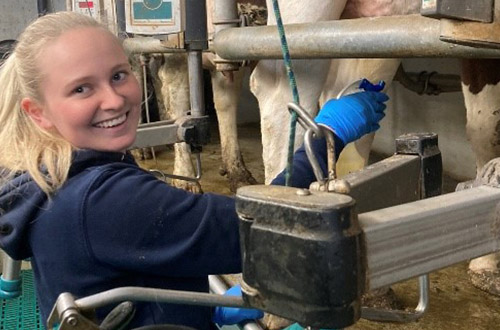
How to reduce the fuel consumption of your tractor
How farmers reduce the fuel consumption during tractor use
Farmers are all too familiar with the fact that the fuel consumption of tractors is one of the biggest cost factors as part of the cultivation of agricultural areas. Ultimately, it can account for up to 20 percent - i.e. one fifth (!) – of the total costs. However, reducing the fuel consumption of tractors is not only extremely sensible from an economic point of view. Saving fuel is also very much the order of the day in view of increasing ecological challenges.
Minor things with a major effect. Farmers must make sure that their tyres are running at the correct inflation pressure. Adjusting the tyre pressure to the type of ground on site is one of the tricks that has the greatest influence on fuel consumption. For example, if the pressure is too low, this increases rolling resistance and also requires more power. It is also always advisable to check whether the tyres are fit for purpose: wider low-pressure tyres can significantly reduce tractors' fuel consumption, even if they appear costly at first glance. Regular oil changes and frequently cleaning the air filter can also help the engine to operate more efficiently and therefore consume less fuel.
Driving efficiently – how tractors consume less fuel
Things that work for a normal vehicle also work for a tractor: driving efficiently. This means that you have to try and drive the tractor as smoothly as possible and at low engine speeds. Avoid unnecessary acceleration and revving the engine. Shifting up to a higher gear in good time can also help to cut the fuel consumption. And you should remember to switch off the tractor whenever you can, as the workhorse consumes fuel even when idling.
Weight and trailer – sometimes less is more when it comes to fuel consumption!
Farmers must ensure that the tractor is not carrying unnecessary loads. Every additional kilogramme of weight increases the fuel consumption. Consequently, avoid unnecessary appliances and loads. However, always remember that the front axle must be carrying at least 20 per cent of the total weight and the vehicle's ability to steer must never be impaired as a result of the cost-cutting measures.
Also avoid overloading the tractor's trailer. An overloaded axle increases the rolling resistance and therefore also the fuel consumption. Tractors' PTOs can generate the same output at a reduced engine speed (approx. 1,600 rpm instead of 2,000 rpm) and thus save 15 to 20 percent of diesel. For instance, we recommend using eco PTO mode when spraying.
Cutting-edge technology can also help to reduce a tractor's fuel consumption in application. For example, there are GPS systems that enable a more efficient utilisation of agriculturally cultivated areas. The use of tyre pressure control systems and cruise control can also help cut the fuel consumption.
Setting the air-conditioning system correctly – how to save fuel
There is no doubt that having an air-conditioning system in a tractor is a real luxury! However, setting it incorrectly means that the tractor's air-conditioning system not only drives up fuel consumption, but it can even make you ill under certain circumstances. The temperature difference between the outside and inside temperature must not exceed 6°C. Switch off the air-conditioning system if it is not absolutely necessary to save fuel.
Simple measures can help significantly cut the fuel consumption in tractor application. Regular tractor servicing and care, driving efficiently, avoiding overloading and the use of technology are just some of the ways to save costs and contribute to protecting the climate. Even minor changes to your daily routine can help reduce the fuel consumption.



